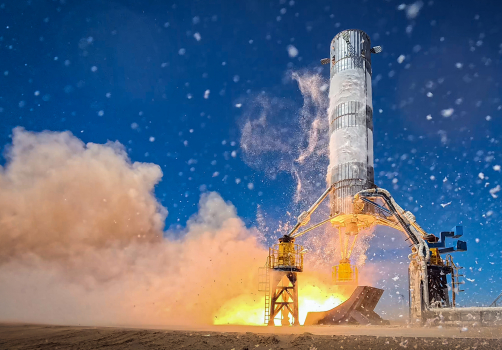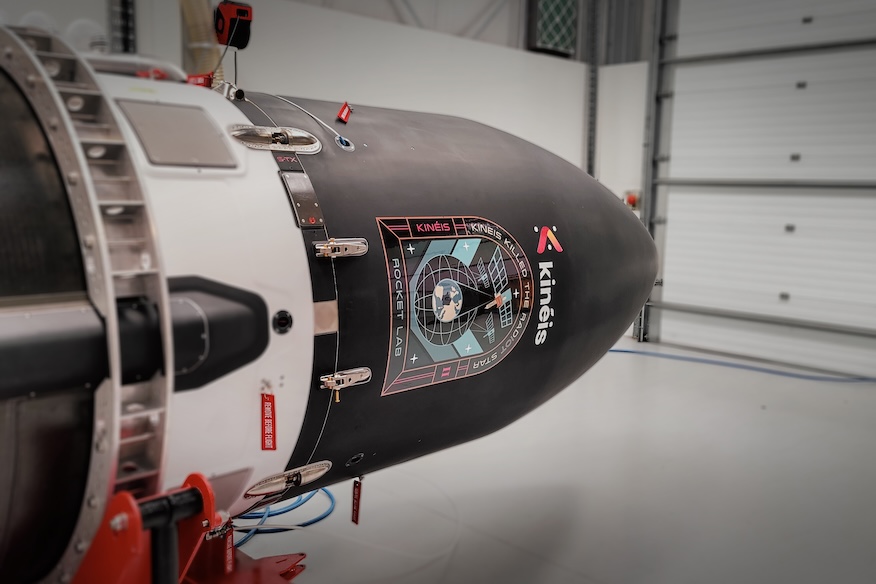[ad_1]
19/09/2024
72 views
3 likes
Just a month after its launch, ESA’s Arctic Weather Satellite has already delivered its first images, notably capturing Storm Boris, which has been wreaking havoc across central Europe.
Equipped with a 19-channel cross-track scanning microwave radiometer, the satellite’s mission is to penetrate the atmosphere and provide detailed temperature and humidity profiles in all weather conditions.
Despite its name, the Arctic Weather Satellite measures temperature and humidity at various altitudes around the world. However, its humidity data is particularly valuable for Arctic weather forecasting, as water vapour levels can change rapidly in this region.
Since it was only launched a month ago on 16 August, the Arctic Weather Satellite is still undergoing rigorous testing of its systems as part of the commissioning phase. However, on 14 September, engineers adjusted their testing schedule to evaluate how well the satellite could measure the effects of Storm Boris.
Their efforts certainly have not gone unrewarded as can be seen in this animation.
The measurements are shown in terms of ‘brightness temperature,’ with lower values (depicted in blue) indicating higher humidity levels. The animation presents these values at 1 km intervals, ranging from 1 km to 7 km above Earth’s surface. The torrential rainfall from Storm Boris is especially evident as dark blue regions low in the atmosphere over Hungary, Slovakia and Poland.
This animation uses data captured on a single day, but with thousands of people evacuated and lives lost, the impact of this massive storm now extends from Poland in the north to Italy in the south, and Romania to the east.
The Arctic Weather Satellite, developed as a prototype, demonstrates how adopting a ‘New Space’ approach – building quickly and at relatively low cost – could be applied to a future constellation of satellites.
This constellation, named EPS-Sterna, which ESA would build for Eumetsat, would provide much more frequent coverage of Earth, offering an almost continuous stream of data for short-term weather forecasting, or ‘nowcasting.’ In the case of devastating storms like Boris, the advantages are self-evident.
However, the benefits of a constellation of satellites would be especially valuable in the Arctic, a region where humidity levels can change rapidly. Also, the effects of climate change are being felt more in the Arctic compared to other parts of the world. Moreover, what happens in the Arctic doesn’t stay in the Arctic so these changes are affecting the Earth system as a whole.
This second animation, which uses data acquired on 5 September, provides a broader view of humidity, represented as brightness temperature, and captures another storm over the Arctic, between Greenland and Svalbard. This animation shows humidity at the altitude of 1 km only, but combines data from several of the Arctic Weather Satellite’s passes over the region that day.
Weather satellites in geostationary orbit, positioned 36 000 km above the equator such as the Meteosat series, do not have visibility over higher latitudes, so cannot be used for Arctic weather forecasting. While the MetOp satellites return data over the poles, they can take up to 24 hours to achieve global coverage – which limits data for short-term weather forecasts worldwide.
As a demonstrator, the Arctic Weather Satellite is just a single satellite in polar orbit and covers the Arctic in a similar way to MetOp. However, the potential future constellation would dramatically increase the number of daily observations, significantly enhancing coverage not only over the Arctic but also across the rest of the globe.
This would enhance weather forecasting, significantly improving safety, reducing economic losses, and providing critical information for decision-making across various sectors, including agriculture, transportation, and disaster management.
The third animation uses data from 27 August, when the Arctic Weather Satellite’s radiometer had been turned on for the very first time – and remarkably captured a storm over Côte d’Ivoire is a West Africa. These data, which use measurements from different altitudes have been overlaid on an image of the same storm from the first geostationary Meteosat Third Generation Imager satellite.
ESA’s Arctic Weather Satellite project manager, Ville Kangas, said, “Although we are still in the process of commissioning the satellite, these initial results have already exceeded our expectations.
“The instrument has yet to be thermally stabilised, and the calibration parameters are still being fine-tuned – yet these images clearly demonstrate the Arctic Weather Satellite’s unique ability to measure storm activity across different altitude layers through clouds and rain, something that is not achievable with other satellite optical or infrared weather instruments.”
Simonetta Cheli, ESA’s Director of Earth Observation Programmes, added, “These first results are excellent and we congratulate everyone involved in developing the satellite, which is already demonstrating that the New Space approach of building such a mission will certainly complement our traditionally-built weather satellites.”
[ad_2]
Source link





No comments! Be the first commenter?